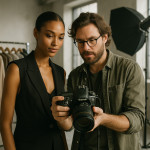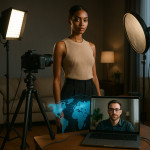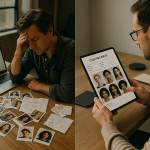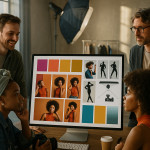On-location etiquette: collaborating smoothly with photographers and crew
A flawless shoot is rarely about the camera gear alone. It is built on rock-solid on-location etiquette, transparent communication and mutual respect among models, photographers and every crew member on set. Follow this practical guide to avoid friction, keep timelines on track and leave every collaborator eager to work with you again.
Why on-location etiquette matters
Studios, rooftops or beach fronts become high-pressure spaces once lights turn on. Clear etiquette keeps creative energy focused on the final image instead of avoidable drama. It also protects budgets, brand reputation and future job referrals.
Before the shoot: lay the foundations
Clarify roles and responsibilities
- Request a concise call sheet that lists every role, from creative director to runner.
- Use a pre-production questionnaire to align expectations and avoid last-minute surprises.
Share creative references early
Distribute mood boards, posing guides or lighting references 48 hours in advance. Early alignment speeds set-up time and reduces micro-adjustments later.
Prepare your personal kit
- Wardrobe: pack every garment itemised in the brief, plus a neutral backup.
- Essentials: water, snacks, charger, skin-tone-matching foundation.
- Legal: bring signed releases and a photo ID.
Review safety and insurance
Even a small glitch can halt production. Ask who carries video, photo and liability cover. If you handle fragile props or climb scenery, read the risk-management checklist beforehand.
Arrival and set-up
Punctuality signals professionalism
Arrive 15 minutes early; that buffer lets you locate wardrobe, greet the crew and relax before the first shot. Late arrivals ripple through schedules and can reduce the number of usable frames.
Follow the traffic flow
Every set has “hot zones” (camera, lights, tether stations) and “cold zones” (wardrobe racks, craft service). Stay in cold zones unless invited, and keep personal items off the floor to avoid accidents.
Communication during the shoot
Use concise verbal cues
Talk in short, actionable sentences: “Need five minutes for lipstick touch-up,” or “Can I step forward half a metre?” Long explanations break momentum and distract focus.
Master non-verbal signals
- Eye contact with the photographer before changing pose.
- Hand raised = request for pause.
- Closed umbrella hand signal = strobe recycle in progress; hold still.
Keep feedback constructive
Swap “I don't like this lighting” with “Could we feather the key light to soften my shadows?” Solutions beat complaints every time.
Respecting space, gear and crew
| Do | Don't |
|---|---|
| Ask before touching lights, stands or tethered laptops. | Move equipment to “get a better angle” without permission. |
| Address crew by their names; it speeds teamwork. | Shout generic commands across the set. |
| Silence phones or keep them on vibrate. | Take personal calls within earshot of recording gear. |
| Offer a quick thanks after every adjustment. | Assume assistants are “just there to help.” |
If you are new to crew dynamics, review the assistant roles checklist to understand who handles which tasks.
Problem-solving under pressure
Stay solution-oriented
Weather turned? Suggest moving under shade or swapping outfits while the team adjusts lighting. An optimistic tone lowers stress and fuels creativity.
Escalate the right way
Report technical issues to the photographer first, not to every crew member. Hierarchical escalation avoids duplicated work and mixed instructions.
Wrapping up and follow-through
Efficient breakdown
Unless told otherwise, models should not dismantle lights, but can help fold fabrics or tidy props. Small gestures accelerate wrap times and build goodwill.
Confirm delivery milestones
- Expected selection date for proof images.
- Retouching turnaround.
- Usage rights and credit tags for every platform.
For remote edits, share your preferred file-naming conventions or link to a remote-shoot tech guide that ensures smooth hand-offs.
Common pitfalls and how to dodge them
- Over-directing the photographer. Trust their vision; offer input only when asked or if a comfort boundary is crossed.
- Ignoring crew fatigue. Schedule micro-breaks every 90 minutes to maintain peak energy.
- Posting behind-the-scenes without consent. Always secure permission before sharing content covered by NDAs or embargoes.
- Forgetting post-shoot gratitude. A simple thank-you email—tagging everyone—keeps networks warm and can lead to referrals.
Quick etiquette quiz
FAQ
- Who should I talk to if wardrobe malfunctions on set?
- Alert the stylist first, then the photographer if timing is critical. Avoid announcing it to the whole crew.
- Is it acceptable to post behind-the-scenes stories during the shoot?
- Only if the client and photographer approve. Many commercial jobs have embargoes.
- How can I build rapport quickly with a new crew?
- Learn names, offer a warm greeting, and keep communication concise and positive.
- What if the schedule overruns and I have another appointment?
- Mention hard out-times during pre-production. On set, remind the producer politely as soon as delays appear.
- Where can I find models experienced in collaborative shoots?
- Browse the collaboration-ready models directory and review their on-set references.
Next steps: turn etiquette into bookings
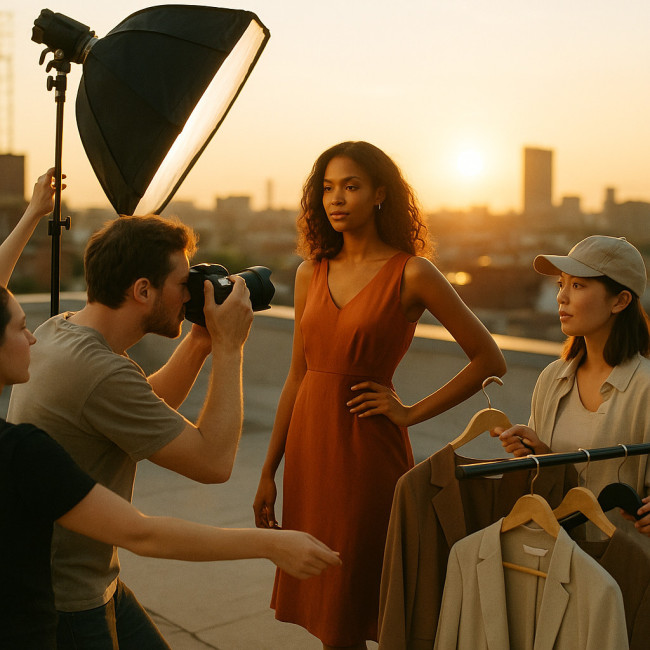
Strong on-location etiquette not only elevates today's shoot but also seeds future gigs. Reinforce your professional image by refining your messaging etiquette and keeping your collaboration stats visible in directories. Ready to prove your reliability? Start by saving this checklist and sharing it with new teams.
Call to action: Download the printable etiquette checklist and share it with your next crew to ensure every set feels seamless.

